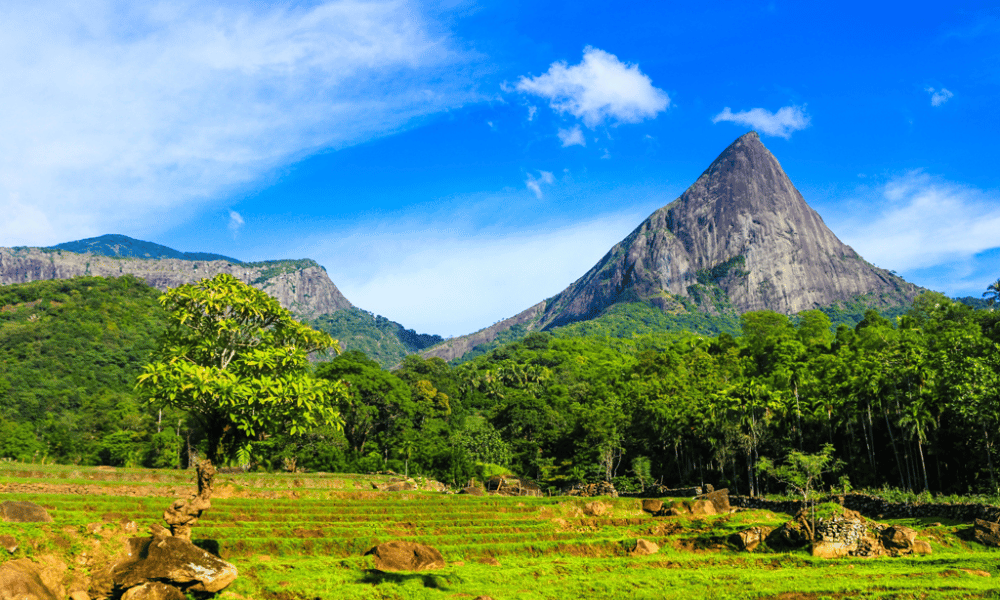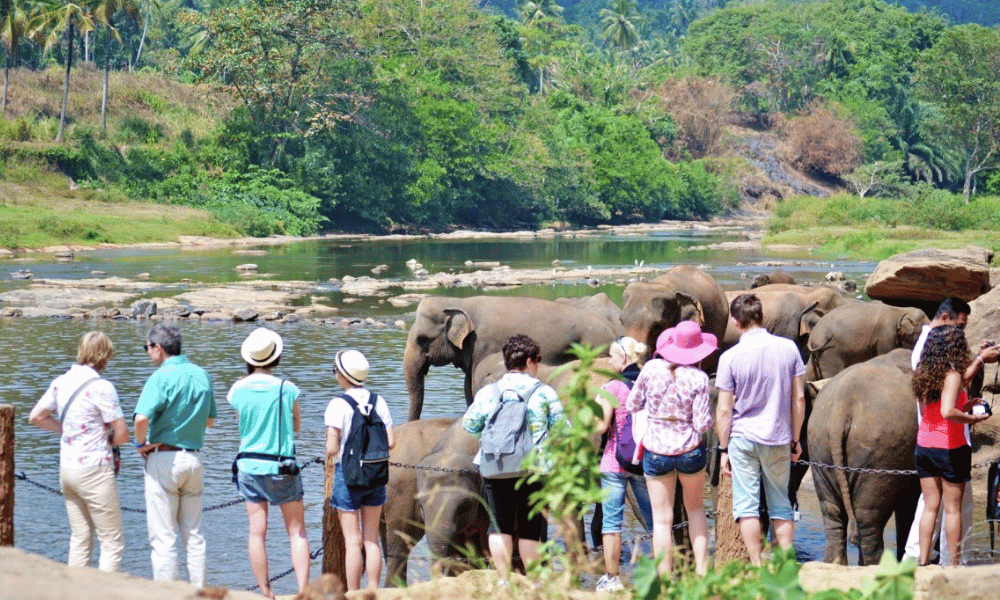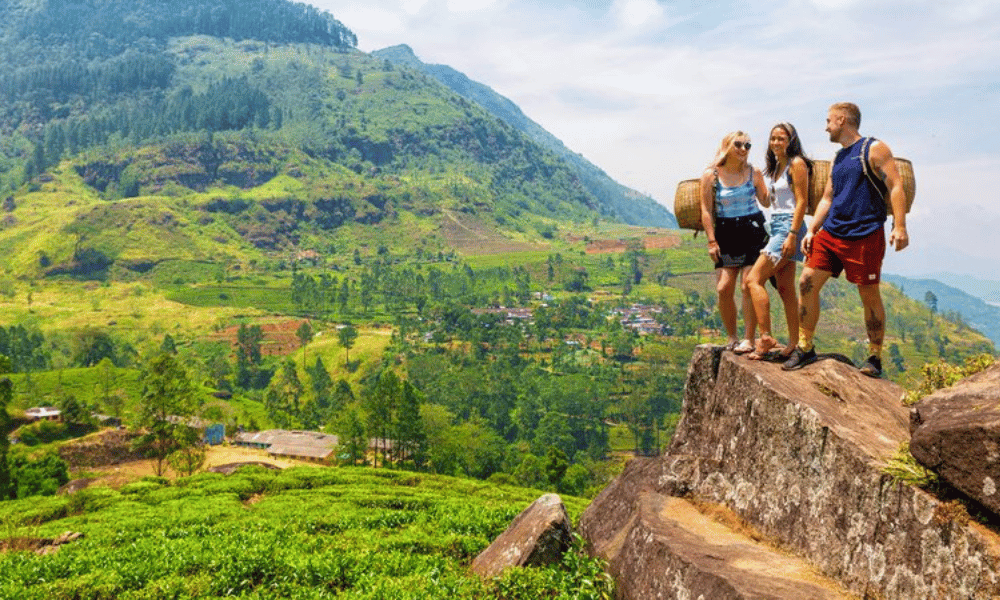Ecotourism in Sri Lanka: Preserving the Paradise
Ecotourism in Sri Lanka is the new trend. Sri Lanka is loved and adored by the world for its natural resources. It’s also dubbed a natural paradise for the very same reason. However, it‘s a challenge to keep the environment safe from human errors. Sri Lanka has taken several steps to preserve the environment. Sustainable tourism in Sri Lanka is an exception to the country’s efforts to protect the environment. It is one method of ensuring the preservation of tourist attractions for the present and future.
Why ecotourism in Sri Lanka?
The understanding of the threat presented by climate change, as well as the country’s role in accelerating it, grows stronger with each passing year. Our global community is contemplating how we may lessen our negative impact on the environment across all industries and sectors. That’s when the concept of ecotourism in Sri Lanka comes into the discussion. We will discuss ecotourism initiatives in Sri Lanka while also looking into the benefits, importance, and challenges faced by ecotourism.
Explaining ecotourism in Sri Lanka
Let’s start by discussing what ecotourism is and how to define it. So, what exactly is ecotourism? The definition of ecotourism from the International Ecotourism Society goes as follows: ethical travel to natural areas that conserve the environment, uphold the well-being of the local people, and involve education and interpretation. Ecotourism, in its most basic form, is all about active nature tourism.
It is a low-impact, small-scale style of travel that aims to protect and maintain the natural world by ensuring that biodiversity, ecosystems, and local communities are preserved and undisturbed. It’s a gratifying and informative event that expands our cultural consciousness and knowledge of the environment.
Ecotourism locations in Sri Lanka are typically fragile, pristine, and well-preserved. Consider islands, intensely biodiverse areas, and historical sites. This mode of transportation was first launched in the 1970s, but it did not take off until the end of the 1980s. Ecotourism is becoming increasingly popular as a result of the growing trend of people prioritizing greener choices.
What’s the importance of ecotourism in Sri Lanka?
The goal of ecotourism in Sri Lanka is to preserve and promote respect for some of the most beautiful ecosystems on the planet. Ecotourism is a sustainable mode of transportation. It encourages visitors to help conserve the environment and contribute to local communities on a much deeper level than casual visitors. This hands-on approach is critical to educating visitors about some of the challenges that these areas confront, which can only be a good thing!
Overtourism is a serious problem for a multitude of reasons. It can impose a strain on a destination’s resources and population, preventing them from efficiently protecting their most vulnerable assets. Unfortunately, when a large number of tourists visit a location, the consequences for the local communities are usually disastrous. Why does this happen? Well, it’s either due to their carelessness, the inherent nature of the sector, or both.
Nobody wants to go to a beach that is littered with plastic. Ecotourism attractions prioritize environmental welfare in order to provide outstanding long-term service.
What are the advantages of ecotourism?
We’ve discussed the value of ecotourism in Sri Lanka and how it helps reduce negative impacts. Now let’s look at why we need it. There are numerous benefits that can be expected through ecotourism, such as:
1. Provides knowledge to people
As we discussed, ecotourism raises awareness about environmental protection. Other than that, it can also inspire genuine change. It only takes one person to spread the word about ecotourism and conservation activities for more people to become aware, make changes at home, and persuade legislators to make a genuine impact. Knowledge is essential to making positive changes.
2. Helps create pleasant surroundings
Sri Lanka is already beautiful; however, some of its corners are not very pleasant due to humans polluting them. Ecotourism in Sri Lanka ensures that the island country stays beautiful for the long term. It protects and preserves fragile ecosystems so they can be enjoyed for generations to come. By choosing to support ecotourism, you can use your travels to save one of nature’s paradises.
3. Helpful to local communities and conservation work
Ecotourism promotes the local economy by directing funds to small businesses and communities rather than giant firms that cut corners to save money. By supporting ecotourism vacations, you get the ability to contribute back to the places you visit while also assisting in the sustainability of local residents’ lives.
4. Ecotourism in Sri Lanka Maximizes the quality of travel
Ecotourism provides enriching experiences, which is what travel should be about. You gain a far deeper cultural understanding of a destination as well as the opportunity to truly appreciate its natural beauty. That is how travel should be. Ecotourism is beneficial to more than just the environment. It also benefits our personal development and mental wellness.
It enables us to contact nature in a respectful and engaging manner, which has numerous health benefits. According to studies, natural settings are also important for our psychological wellness. To put it another way, ecotourism provides a sense of happiness.
Ecotourism in Sri Lanka is further explained
Environmentally responsible tourism is critical to the health of Sri Lanka’s natural biodiversity. It should not be forgotten that during the previous fifty years, the country has lost a large portion of its natural environment. Over this time, tourism in Sri Lanka has grown at an incredible rate, with tourist numbers reaching the millions each year.
It’s not a coincidence. However, as is frequently the case, economic growth has resulted in environmental damage. Nonetheless, according to the World Ecotourism Organization, ecotourism has grown “globally three times faster than the tourism industry as a whole” since 2004.
UNESCO World Heritage Sites in Sri Lanka
The island is home to a plethora of protected natural and cultural monuments, including nine UNESCO World Heritage Sites, 26 national parks, and a vast number of protected animal reserves. Many ecotourism destinations can be located within these protected areas, whether they are deep within the forest or high in the sky.
Ecotourism is a huge trend in Sri Lanka since most people prefer to appreciate their surroundings in the most natural way possible, such as by swimming in pure waterways or hiking through unexplored terrain.
Preserving wildlife with ecotoourism in Sri Lanka
Aside from magnificent beaches, little islands are popular among tourists. The most crucial components of the wildlife experience are camping at night and getting a close look at animals. Mountain climbing, hiking, and kayaking are some ecotourism activities that get you close to nature without much infrastructure.
There are various rules to follow when traveling. Littering, for example, is severely prohibited, as is vandalism of any kind and feeding wild animals. Furthermore, the rainforests are kept as close to their natural state as possible. Ecotourism is the next best thing to do when visiting Sri Lanka because it allows you to get as close to nature as possible.
The potential for ecotourism in Sri Lanka
Sri Lanka has a lot of potential for ecotourism, which may be profitable if the essential services and infrastructure are established. Sri Lankan cultural sites such as Anuradhapura, Polonnaruwa, Kandy, Sigirya, and Galle, among others, are one-of-a-kind cultural riches with significant potential when linked to ecotourism in Sri Lanka.
Numerous scientists’ professional interests have drawn them to Sri Lanka’s unique ecology and biological and cultural riches. Over the last few decades, they have undertaken field studies in ecology, zoology, botany, sociology, and anthropology.
The best ecotourism activities in Sri Lanka
Some of the most important ecotourism activities in Sri Lanka include wildlife spotting, bird watching, camping, trekking, hiking, archaeology, adventure tourism, nature photography tours, and nature painting courses.
What are the ecotourism initiatives in Sri Lanka?
Sri Lanka has taken several ecotourism initiatives to preserve the island country. Due to its rich biodiversity, the Yala Palatupana Tourism Zone is being sought for status as a Protected Conservancy Area.
Furthermore, new criteria for ensuring that new tourism projects fulfill sustainability standards, such as those requiring renewable energy, recycling, and zero single-use plastic, are being established.
UN Sustainable Development Goals for 2030
When it comes to meeting future sustainability standards, boutique hotels that are currently in operation will need to set a timeframe. Sri Lanka Tourism has taken initiatives to achieve the UN Sustainable Development Goals for 2030.
MEPA (Marine Environment Protection Authority) works with Sri Lanka Tourism to safeguard the marine environment so that future generations can enjoy a healthy coastline and ocean environment. Because of the X-Press Pearl ship accident, this collaboration has been halted.
Tourism and greenhouse gas emissions
Tourism accounted for at least 5% of global greenhouse gas emissions in 2019, according to the United Nations World Tourism Organization, making it an urgent demand. It’s clear that more and more people, especially Millennial and Gen-Z travelers, are becoming increasingly conscious of their carbon footprint. As a result, they seek out more environmentally friendly destinations when they travel.
TUI Group reported an 84% increase in the number of clients who chose “greener and fairer” vacation packages between 2015 and 2020. TUI Group operates travel agencies, hotels, airlines, retail stores, and cruise ships and is the world’s largest leisure, travel, and tourism firm.
As major global issues such as biodiversity loss, climate change, and pollution increasingly threaten the present and future of travel, Sri Lanka Tourism has been considering ways to handle local challenges to safeguard the global sector.
Challenges with ecotourism in Sri Lanka
There are several challenges that need to be addressed when discussing ecotourism initiatives in Sri Lanka. One of the significant failures is that many individuals and organizations are more interested in making money from the tourism sector than in saving the environment. This human greed, which values profit over the environment, leads to numerous downsides to ecotourism, such as:
- Communities are being evicted in gross violation of their rights.
- Forests are being cut to build hotels and resorts.
- Landscape disruptions caused by soil erosion owing to excessive mobility
- Tourists are putting pressure on already scarce resources such as food, water, energy, and so on.
Wrapping up
In many nations, ecotourism in Sri Lanka is a popular and increasingly appealing component of tourism. As we discussed, Sri Lanka has undertaken several ecotourism initiatives to preserve the island country’s nature. However, there is still a long way to go in this regard. Sri Lanka has yet to develop and promote this form of tourism in the mainstream. It can help to maintain and manage Sri Lanka’s protected areas system as well as the central economy.
The fact that Sri Lanka has easy access to a variety of ecosystems in a short period of time is a major advantage. Sri Lanka is a small country, but it contains a varied range of easily accessible habitats that are only two to four hours apart by car. As a result, tourists have the chance to quickly and easily visit numerous distinct habitats, observe more wildlife, and immerse themselves in nature.
Follow Us
Sri Lanka Holiday Packages















